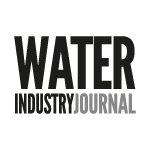By Dirk Martin, Apateq
The water and wastewater industries must achieve greater sustainability while managing the globally increasing demand for clean water. Dirk Martin from Apateq explains how seal-less pump technology can play a pivotal role in meeting these needs.
The issues
Globally, more than two million tons of sewage, industrial and agricultural waste is discharged each day into waterways. The UN estimates that at least 80 percent of wastewater is returned to the environment without being treated or reused1. For landfill sites, escaping leachate can contaminate groundwater, surface water and soil.
Wastewater treatment is an energy-intensive industry, and the IEA highlights significant increases in energy demand “both in terms of the volume and the intensity of treatment” up to 20402. This impacts two key areas: sustainability and cost. High energy usage hampers net zero goals and sustainability drives. Fluctuating energy costs in the current geopolitical climate raise operating costs. Pumps are critical to wastewater treatment, and modern, seal-less pump technology can help to lower CO2 emissions and costs.
Seal-less pump technology and processes
Ultrafiltration (UF) and reverse osmosis (RO) are used for the transition of landfill leachate to clean water. The processes can be challenging due to high concentration of particles, including salts such as potassium, chloride, ammonia, and organic materials. When selecting a high-pressure RO pump, reliability with minimal maintenance and high efficiency are crucial.
Seal-less RO pumps demonstrate distinct advantages over other pump types; many liquids pumped in waste streams are harmful to pump seals – a seal-less option obviates this issue, while also allowing for a longer service life. With no dynamic seals, this type of pump can run dry indefinitely. Perhaps most importantly, there are no seals to wear or leak, ensuring operator safety and environmental security.
Where there is a high concentration of chloride in the process liquid, seals and packing in regular pumps can deteriorate rapidly. While other pump technologies, such as axial piston pumps, may need 5µm absolute filters for protection which blind easily and may need replacing after 15 – 20 days’ use, seal-less pumps do not share the issue of tight tolerances that require fine filtration, and 300µm filtration is sufficient. In essence, the level of filtration is determined by the membrane’s needs rather than the pumps’.
Seal-less pump technology in action
In 2019, we installed Wanner’s ultra-high-pressure seal-less pumps for a landfill water treatment system in Sicily, incorporating three pumps for use in five RO stages.
The first stage is UF: pre-treatment to remove most suspended solids and microorganisms from the contaminated water. This is followed by three-stage RO to treat the UF permeate, removing the remains of the dissolved salts and other organic solubles and purifying the effluent water such that it is drinking water quality. High-pressure RO systems reduce the volume of the first RO stage brine flow.
One seal-less device pumps water to the through stage one RO, while two pumps run in parallel through the high-pressure RO stage. The permeate from stage one is then sent through the next low pressure RO stages to post-treat the permeate. The pumps run up to 10 cubic metres per hour at 120 bar for the high-pressure RO systems, and up to 15 cubic metres per hour at 80 bar for the RO stage one.
Cost savings: Converting contaminated water from landfill into drinking-quality water eliminates the need for transportation and disposal of leachate via an external facility. Prior operating costs for the client were around €100 per cubic metre for a facility processing 300 cubic metres per day. These operating costs decreased to less than €10 per cubic metre.
Energy and maintenance savings: Centrifugal pumps used in comparable wastewater treatment processes have high electricity usage, but the seal-less pumps are proving more efficient, with lower KW requirement, delivering a consistent and accurate pressure. Generally, membranes need changing within two years of service but, since the 2019 commissioning, this system continues to operate with the original set of membranes, reducing operating costs, which are approximately 25% lower than originally envisaged. While many of these benefits are due to our proprietary software and unique approach to membrane management, the high-pressure pumps play a vital part in lowering maintenance needs.
Previously, with plunger pumps, maintenance had involved replacement of packing, seals and springs every six months, with weekly cleaning. By comparison, the seal-less pumps we used have significantly lower maintenance requirements – oil and drive belt change, and only require annual cleaning. For a plant requiring 24/7 operation, this is a clear advantage. An on-site operator is only needed for one shift per day, with the remaining surveillance undertaken remotely, and remote access has enabled new operators to by trained without our staff needing to be on-site. This reliability is underpinned by Wanner’s patented ADPC (Advanced Diaphragm Position Control) Technology.
System effectiveness: Ammonia in leachate has dropped from up to 3,500 mg/L down to less than two, while chemical oxygen demand levels are reduced from 20,000 – 40,000 mg/L to 5 – 10mg/L.
With a leachate water conductivity of 25000 µS/cm, the system is achieving a concentration factor (Cf) of >5, meaning a clear water production (permeate) of >80% from the raw water inflow, as compared to typical plants which, with the same conductivity, generally achieve only Cf3 – 4, or 66 – 75% permeate production.
Crucially, the quality of the permeate is consistently better than regulated discharge limits, providing peace of mind particularly in the instance of random checks on effluent levels, and avoiding any fines that non-compliance would incur. The quality of the water processed means that it can flow directly into the Mediterranean safely and reliably.
Concluding thoughts
Water safety and increased sustainability are of paramount importance. But the sector must balance these with operational efficiency and cost-effectiveness. Incorporating seal-less pump technology as an integral part of system commissioning, can meet these often-competing priorities, benefitting wastewater operators, the public, and the environment.
References
1 https://www.nrdc.org/stories/water-pollution-everything-you-need-know
2 https://unesdoc.unesco.org/ark:/48223/pf0000388948/PDF/388948eng.pdf.multi.page=67




